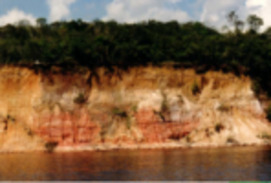Kaolin-Group Minerals: From Hydrogen-Bonded Layers to Environmental Recorders
Kaolin-group minerals typically form as a result of hydrothermal alteration and/or weathering processes. They occur in environments as diverse as tropical soils, continental sedimentary deposits, and altered crustal rocks. They have also been detected on the surface of Mars. Given their prevalence, they have attracted the attention of researchers in materials chemistry, environmental geochemistry, and high-pressure mineral physics. Their structure and related properties have been studied for about a century, and these studies reflect advances in experimental techniques, modeling approaches, and concepts in mineralogy. Among key features of their structure are the predominance of 2-D stacking defects and the peculiar role of H-bonding in the control of their polytypism.
Kaolin-Group Minerals: From Hydrogen-Bonded Layers to Environmental Recorders Read More »


